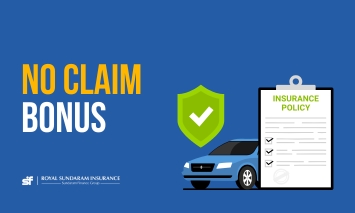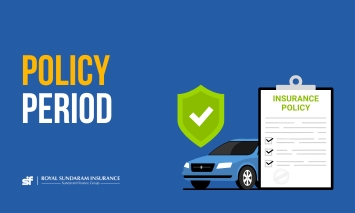What Is Hypothecation in Insurance?
Mar 31, 2025 • 15 Min Read
A vehicle, whether a car or a bike, can be a significant investment. When you purchase a car through a loan, your lender requires some form of security. This is where car insurance hypothecation comes into play. In this article, we’ll explain what hypothecation in insurance is, how it works, and why removing it is essential for you as a car owner.
What Does Hypothecation Mean?
In simple terms, hypothecation in insurance is when an asset (in this case, your vehicle) is pledged as security to a lender (the bank or a financial institution) when you take out a loan. While the car belongs to you, the lender retains a monetary claim until the loan is repaid in full. If you default on the loan, the lender has the right to repossess the vehicle.
Let’s say you take out a car loan. The lender hypothecates the vehicle, meaning they have a legal right over the car until your loan is fully paid off. You cannot sell or transfer ownership of the vehicle while it is hypothecated to the lender.
How Hypothecation Affects Your Insurance Policy
When your car is purchased with a loan, the lender will add car insurance hypothecation to your policy. This simply means that the lender is noted in your policy as having an interest in the vehicle. Here’s why this matters:
- Full Control Over Insurance Claims: If your vehicle is stolen or involved in an accident, the insurance company will settle the claim with both you and the lender, as they still have a financial stake in the vehicle.
- Insurance Documentation: When you purchase or renew insurance, your policy will reflect whether the vehicle was bought outright or through a loan. The registration certificate (RC) of the vehicle will indicate hypothecation if it was financed with a loan.
How to Add Hypothecation to Your Insurance Policy
When you purchase a car on loan, hypothecation in insurance policy is automatically added. To ensure everything is correctly noted, you’ll need the following documents:
- Original Registration Certificate (RC): This document shows the vehicle’s hypothecation details.
- Form 34: This is the form for adding hypothecation.
- Valid Car Insurance Policy: The insurance document should be aligned with the hypothecation.
- Proof of Address: You’ll need proof of address, such as a utility bill or bank statement.
- Pollution Under Control Certificate (PUCC): A mandatory requirement.
- Payment of Fees: You must pay the necessary fee to the Regional Transport Office (RTO) to process the hypothecation.
Once all documents are submitted, the hypothecation will be officially recorded.
Why Removing Hypothecation Is Important
Once your car loan is paid off, it’s crucial to remove the car insurance hypothecation from your policy and other documents. Here's why:
- Complete Ownership of Your Vehicle: Removing hypothecation signifies that you fully own the car. You can now transfer or sell it without any restrictions.
- Freedom to Switch Insurers: With the hypothecation removed, you have the flexibility to switch to a different car insurance provider if you find better rates or coverage.
- Potential for Lower Premiums: Some insurers may offer reduced premiums once the hypothecation is removed, though this depends on the specific terms of your policy and insurer.
How to Remove Hypothecation from Your Insurance and RC
After repaying your car loan, follow these steps to remove car insurance hypothecation from your documents:
- Obtain a No Objection Certificate (NOC): from your lender, confirming that the loan has been fully repaid.
- Submit the NOC along with the Registration Certificate (RC), Pollution Under Control (PUC) certificate, and a valid car insurance policy to the RTO.
- Pay the Applicable Fees: The RTO will charge a nominal fee for processing the hypothecation removal.
- Receive an Updated RC: Once the RTO processes your application, you’ll receive an updated registration certificate showing you as the full owner of the vehicle.
- Submit the Updated RC to Your Insurance Provider: After receiving the new RC, send it to your insurer to update your insurance policy and remove the hypothecation.
What Happens If You Don't Remove Hypothecation?
Leaving hypothecation in insurance policy and registration documents can have some negative effects even after you’ve repaid your loan. Here’s what can happen:
- No Full Control Over Your Car: While you may have cleared your loan, the lender still holds a claim on your vehicle if hypothecation remains. This can cause complications when trying to sell or transfer ownership.
- Difficulty in Insurance Claims: If hypothecation isn’t removed, the lender may still be involved in the claims process for any insurance settlements. This can slow down the process and limit your ability to manage your vehicle's insurance policy.
- Potential Higher Premiums: Since some insurance providers offer better rates once hypothecation is removed, leaving it on your policy could result in missed opportunities for savings.
Conclusion
Hypothecation in insurance is a critical component of your vehicle loan. It ensures that your lender has legal rights over the car while you repay the loan. Once the loan is cleared, removing hypothecation from your car insurance policy and registration is essential for gaining complete control over your vehicle. This not only provides peace of mind but also allows you to manage your insurance policies more freely.
Royal Sundaram will help you with your Hypothecation in insurance as it is a critical component of your vehicle loan. It ensures that your lender has legal rights over the car while you repay the loan. Once the loan is cleared, removing hypothecation from your car insurance policy and registration is essential for gaining complete control over your vehicle. This not only provides peace of mind but also allows you to manage your insurance policies more freely.



Discover the perfect insurance plan for you!
Get your free quote now!
Get StartedBy Clicking on Get Started, You agree to our Terms and Conditions and override DNC/NDNC registration.
More like this
View more





.png)